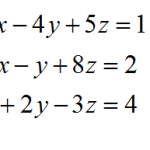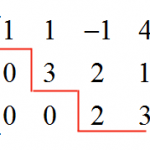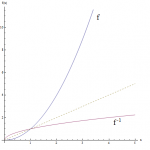It often happens that a bell rings and some students leave a classroom having unanswered questions, while other learners feel boredom because a professor explains things they already know. It is clear that people perceive information differently, and it is impossible to satisfy everyone’s needs in a 30+ class. An educator cannot stop a lesson to explain something to one person. At the same time, it is not right to leave this person without support.
Personalized learning strategies are designed to address this problem. They are adapted to each student’s capabilities and help one to reach full academic potential. In this article, we have outlined the steps schools and universities should take to implement PL programs.

Teachers should be trained to access each student
In the framework of the traditional educational system, lessons are built on a teacher-centered model. Educators do not know and often even do not care whether students understood course material or not. It is not surprising that some young people get low marks and cannot keep up with a class. The way how professors think and work should be changed to improve the situation. Personalized learning strategies would not function smoothly without duly trained specialists. School administrations should hold meetings with educators, acquaint them with the latest grading systems, innovations, progressive ideas and teaching approaches, effective academic activities, set up steps helping to customize learners’ experience. If professors get clear guidelines on how each student’s talents, academic performance, and preferences should be assessed, PL would become a part of their professional philosophy.
Take advantage of technology
Technology simplifies teachers’ work because they can delegate some responsibilities to machines, make education more demonstrative, comfortable, and engaging. Everyone can choose suitable information channels. For example, it is great that auditory learners can listen to textbooks instead of reading them, while visual learners can watch educational videos instead of attending on-campus lectures.
Most PL strategies involve using e-learning tools, like math homework service for example. Students’ needs and results may be tracked anytime and everywhere. For their part, learners may request support and get it almost instantly from a smart software or an online tutor. In contrast, with the traditional educational system, young people feel alone and lost when coming home, trying to perform challenging assignments, and stumbling upon obstacles.
Game-based learning is a popular trend today. Knowledge is presented in an entertaining and bright form. Students can study at their own pace by visiting fantastic universes and passing exciting quests. One study has shown that learners have improved their standardized test results by 11,6% after their professor has introduced a math game in a class. There are many other ways to use technology for learning. For example, some educators ask young people to upload their homework to Google Docs or work together in a file in real time. This ensures better collaboration, allows to correct mistakes right away and not when students submit ready homework.
Students should have a part in academic planning
It is important for learners to understand that education is not a tedious duty but their deliberate choice, a ticket to successful and happy adult life. Since the youngest age, children should be taught to determine personal needs, make independent decisions, direct their fates, believe that the world is full of opportunities and each person can find a suitable place in it.
It is recommended to avoid “take it or leave it” tone and always provide some options to choose from. For example, a professor may offer different learning materials (textbooks, audios, videos) and note taking methods (writing on paper, typing on a computer, recording lecturer’s speech on a tape recorder). Also, learners’ freedom may extend to compiling personalized curricula. If educators value young people’s opinion and allow them to take part in goal setting, students would be more motivated to study hard, grow into self-sufficient persons able to defend their point of view, accustomed to influencing the surrounding world instead of obeying the system and performing other people’s commands.
Personalized learning contributes to career building. If a person gets used to controlling one’s academic activities, one would be a responsible worker on whom a boss can rely. There would be no need to monitor each one’s step and explain elementary details. As a rule, such young people have no problems with undertaking responsible tasks, dividing them into consecutive steps, compiling their own strategies, and moving purposefully to a goal.
Multiple ways to show knowledge
Not all learners cope well with standardized tests and pass/fail exams. Some students are great at writing, while others are good speakers. Therefore, it is wrong to assess everyone’s knowledge in the same way. Apart from final semester exams, there should be many intermediate tasks allowing educators to draw a holistic picture of learner’s proficiency in a discipline. Finding student’s weaknesses today and working on them one-on-one, a professor may help a young person to avoid serious mistakes in the future. Otherwise, knowledge gaps would become evident way too late when it is harder to fill in them.
Flipped instruction
With a traditional approach, students get theoretical information at on-campus lectures and perform assignments at home. Flipped instruction inverts the learning process: young people watch video lectures at home and come to a class to work on practical cases. This scheme seems to be reasonable because learners need more support when practicing rather than when considering theory.
In case you have any suggestion, or if you would like to report a broken solver/calculator, please do not hesitate to contact us .







